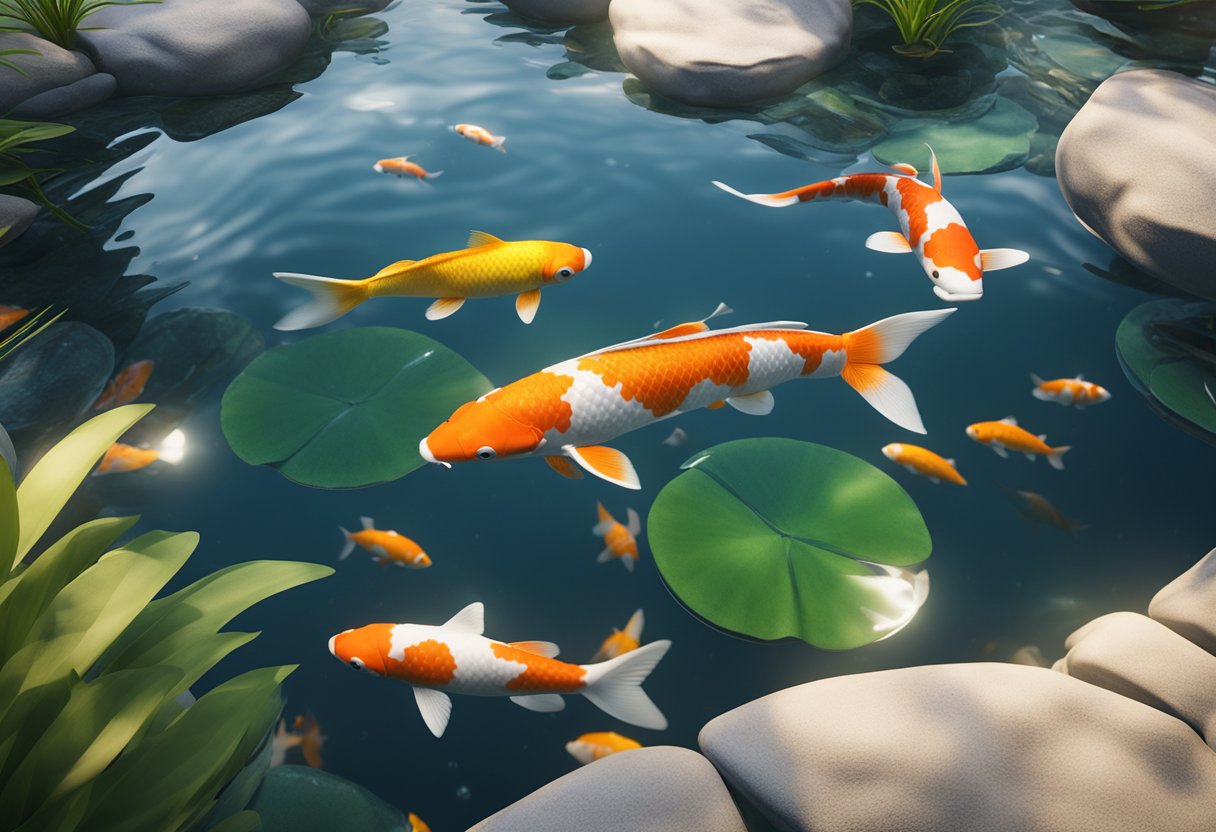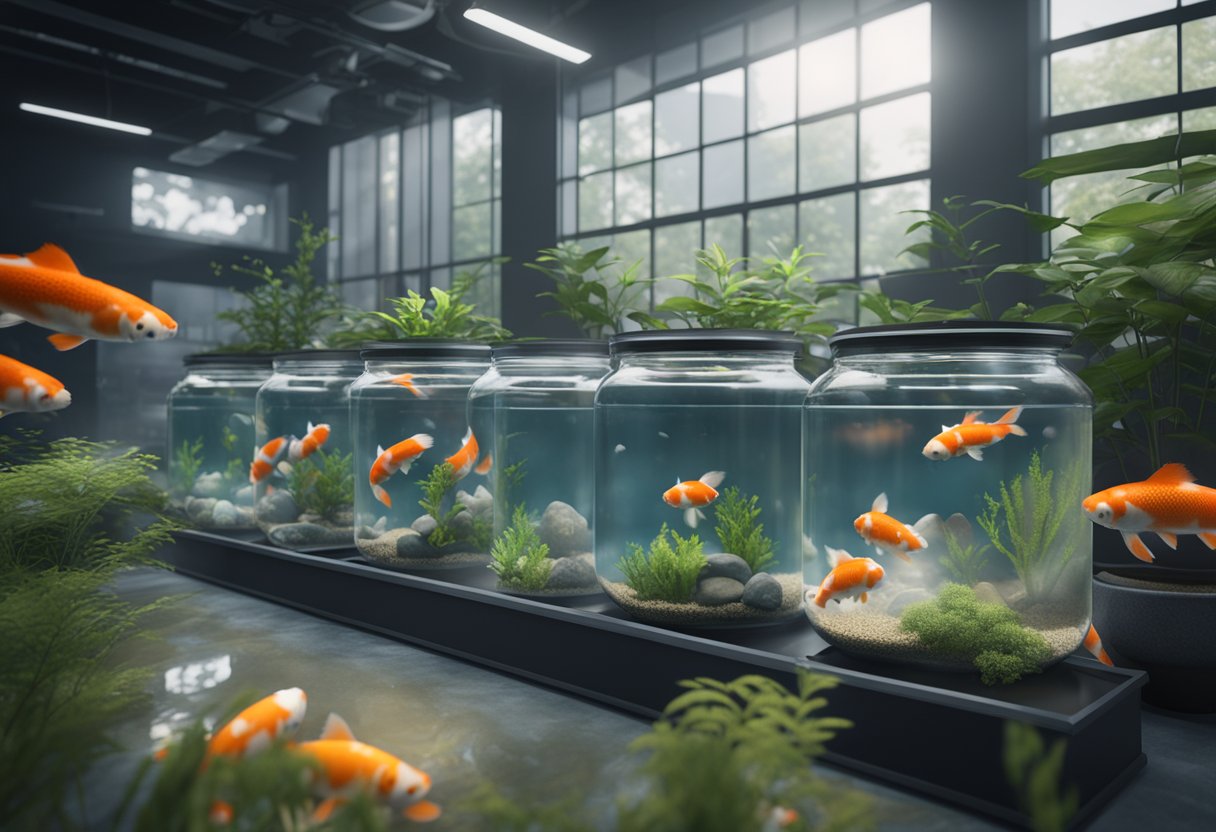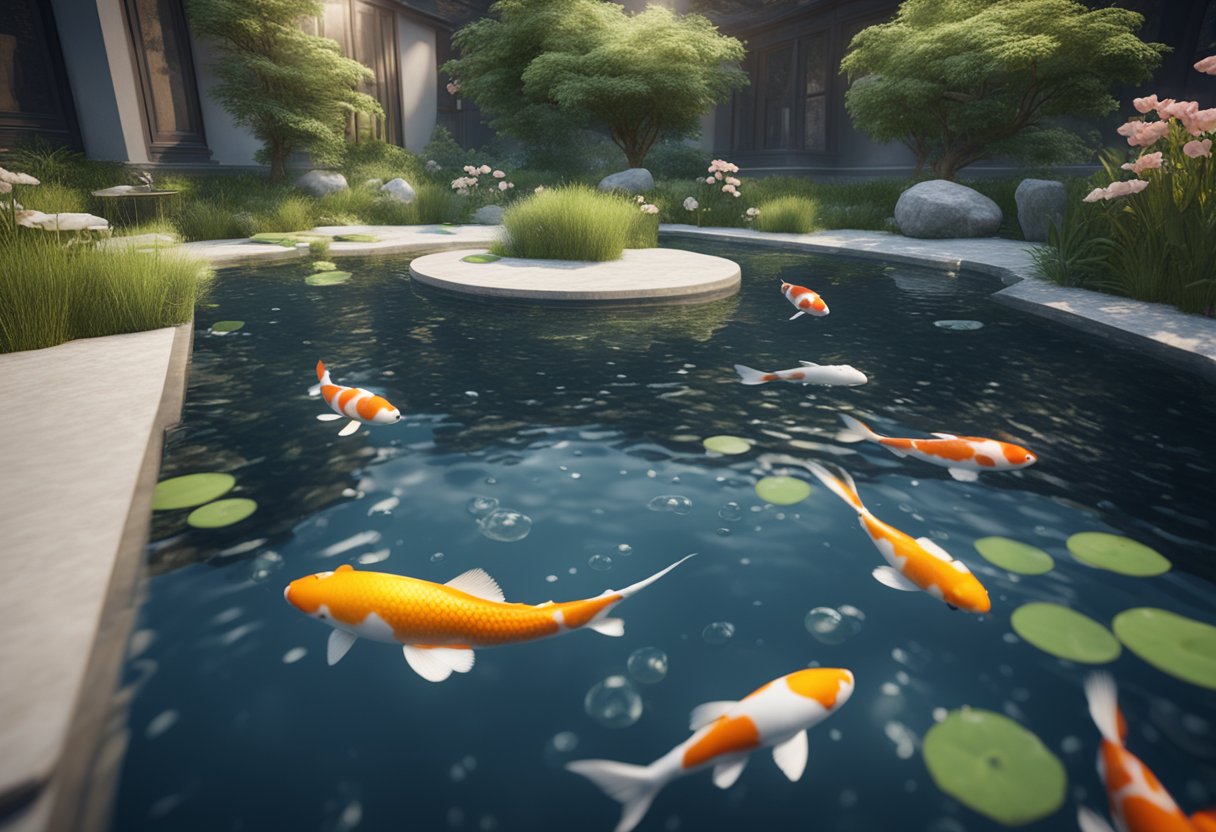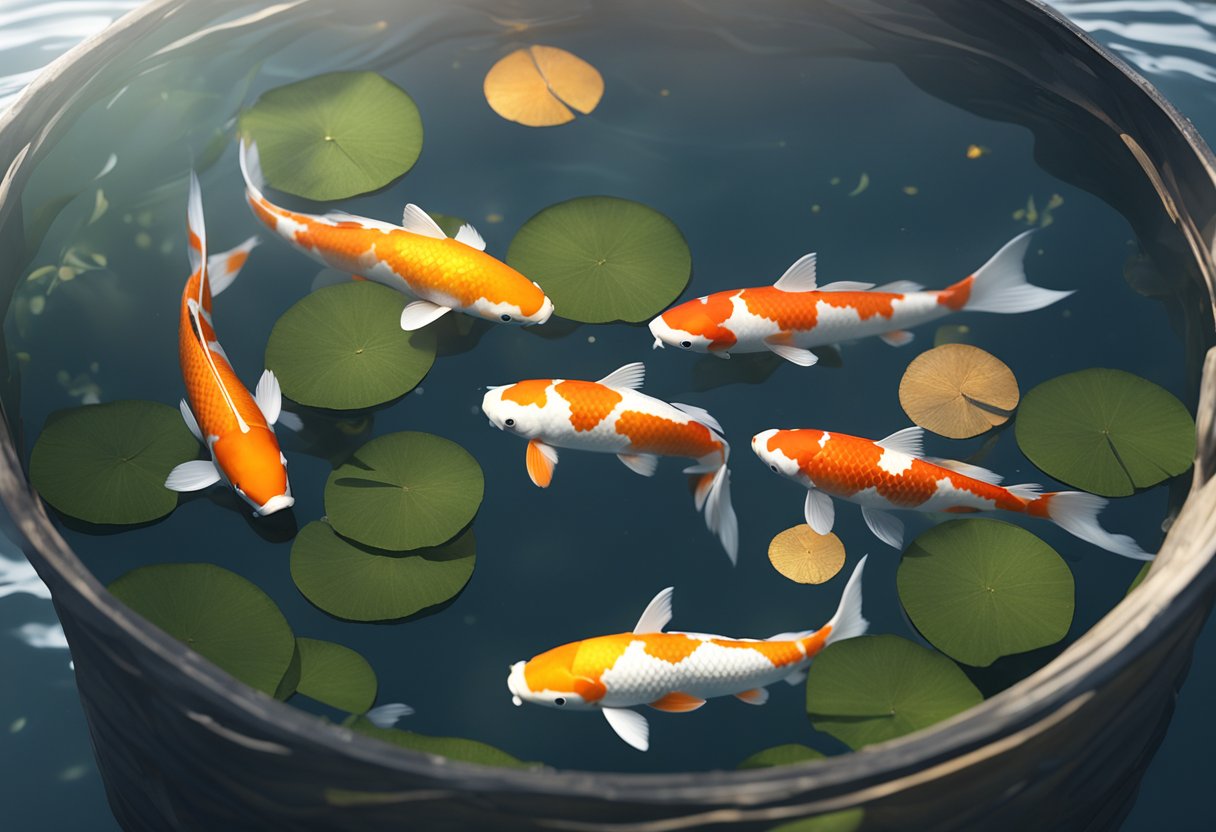Koi Pond Care: Water Quality Maintenance Tips

| Parameter | Ideal Range | Testing Frequency |
|---|---|---|
| pH levels | 7.0-8.5 | Weekly |
| Ammonia levels | 0 ppm | Weekly |
| Nitrite levels | 0 ppm | Weekly |
| Temperature | 65-75°F (18-24°C) | Daily |
| Oxygen levels | 6-8 ppm | Weekly |
Regular water quality testing and monitoring not only ensures the health of your koi fish but also helps prevent the development of harmful conditions in the pond. By adhering to best practices for koi pond water quality testing, you can create a thriving environment that promotes the longevity and vibrancy of your beloved koi.
Proper Filtration System for Koi Ponds

When it comes to maintaining water quality for koi fish, having a proper filtration system is of utmost importance. A filtration system helps to keep the pond water clean and free from harmful substances that can negatively impact the health of the koi.
There are several factors to consider when selecting a filtration system for your koi pond. The size of the pond and the number of koi fish will play a significant role in determining the type and capacity of the filtration system needed. It’s essential to choose a system that can handle the volume of water in your pond, ensuring efficient filtration and maintaining optimal water quality.
One popular type of filtration system for koi ponds is a biological filtration system. This system utilizes beneficial bacteria to break down organic waste and harmful chemicals in the water. The bacteria colonize in the filter media, creating a biofilm that traps and breaks down pollutants, resulting in cleaner water for the koi.
Another crucial component of a filtration system is mechanical filtration. This filtration stage removes larger debris such as leaves, algae, and uneaten food from the water, preventing them from decomposing and compromising water quality. Mechanical filtration can be achieved using filter pads, brushes, or foam blocks, which physically trap and remove the particles.
In addition to biological and mechanical filtration, some advanced filtration systems also include chemical filtration. This stage involves the use of activated carbon or other chemical filter media to remove dissolved impurities and toxins from the water.
When installing a filtration system, it’s essential to consider the flow rate and turnover rate. The flow rate refers to the speed at which water passes through the filtration system, while the turnover rate refers to the amount of time it takes for the entire pond volume to pass through the filter. A higher turnover rate ensures that the water is adequately processed and filtered.
Filtration System Recommendations:
| Filtration System | Pond Size | Koi Fish Quantity |
|---|---|---|
| Koi Pond Filtration System A | Small (up to 500 gallons) | Up to 3 koi fish |
| Koi Pond Filtration System B | Medium (up to 1,000 gallons) | 3-6 koi fish |
| Koi Pond Filtration System C | Large (up to 2,000 gallons) | 6-10 koi fish |
Proper maintenance and regular cleaning of the filtration system are vital to ensure its optimal performance. This includes rinsing or replacing filter media, unclogging any blockages, and checking for any signs of wear or damage.
By investing in the right filtration system and maintaining it properly, you can create a clean and healthy environment for your koi fish, allowing them to thrive and display their vibrant colors and graceful movements.
Maintaining Water Clarity
In a koi pond, maintaining water clarity is essential for the health and well-being of the koi fish. Clear water not only enhances the aesthetic appeal of the pond but also creates a conducive environment for the fish to thrive. This section explores different techniques for maintaining water clarity in koi ponds, including routine water changes, algae control, and the use of water treatments to address clarity issues.
Routine Water Changes
Regular water changes are an effective way to keep the water in a koi pond clear and balanced. By replacing a portion of the water on a weekly or bi-weekly basis, excess nutrients, debris, and waste build-up can be removed. This helps prevent the growth of algae and maintains optimal water quality for the koi fish. Aim to replace about 10-20% of the pond water during each water change, ensuring that the new water is free from contaminants.
Algae Control
Algae growth can negatively impact water clarity in koi ponds. To control algae, it is important to maintain the right balance of sunlight, nutrients, and dissolved oxygen in the water. Limiting sunlight exposure by providing shading or using pond coverings can help reduce algae growth. Additionally, the use of algaecides or natural treatments, such as barley straw, can help keep algae under control and prevent it from clouding the water.
Water Treatments
Water treatments can be used to address clarity issues in koi ponds. Clarifiers and flocculants are commonly used to bind suspended particles together, making it easier for the filtration system to capture and remove them. These treatments can help improve water clarity by reducing sediment and debris floating in the water. It is important to follow the product instructions carefully and only use treatments that are safe for koi fish.
Remember, maintaining water clarity in a koi pond is crucial for the overall health of the fish. By implementing regular water changes, controlling algae growth, and using appropriate water treatments, you can ensure that your koi pond remains clear and provides a healthy habitat for your fish.
Balancing pH and Oxygen Levels
Maintaining proper pH and oxygen levels in a koi pond is essential for the overall health and well-being of the fish. A balanced pH level ensures that the water is neither too acidic nor too alkaline, providing a comfortable environment for the koi. Additionally, adequate oxygen levels are crucial for supporting the fish’s respiratory system, promoting their growth and vitality.
pH Level: The ideal pH range for a koi pond is typically between 7.0 and 8.5. It is important to regularly test the pH level and make adjustments as needed to keep it within this range. A pH that is too high or too low can cause stress for the koi and lead to various health issues.
Oxygen Levels: Koi fish require sufficient oxygen to breathe properly. High oxygen levels help maintain their immune system, enhance their digestion, and promote overall well-being. It is crucial to ensure adequate oxygenation in the pond, especially during hot summer months or when stocking a high number of koi.
There are several ways to achieve the proper balance of pH and oxygen levels:
- Water Aeration: Introducing aeration devices, such as air pumps and diffusers, can increase oxygen levels in the pond. The bubbling action helps oxygenate the water and prevents oxygen depletion.
- Proper Filtration: A well-designed filtration system contributes to maintaining optimal water quality by removing impurities and maintaining a stable pH level. Ensure that the filtration system is adequately sized for the pond volume and can handle the filtration needs of the koi population.
- Regular Monitoring and Water Changes: Regularly test the pH level and oxygen levels in the pond using appropriate testing kits. If the pH is too high or too low, adjust it gradually using pH buffers or additives recommended for use in koi ponds. If oxygen levels are low, performing partial water changes can help replenish oxygen and improve water quality.
- Avoid Overstocking: Overstocking the pond can lead to increased waste production, which can negatively impact pH and oxygen levels. Maintain a suitable number of koi based on the size of the pond to ensure optimum water conditions.
Properly balancing pH and oxygen levels in a koi pond is crucial for the health and well-being of the fish. By monitoring and maintaining these factors, koi keepers can create an optimal environment that supports the growth and vitality of their prized fish.




